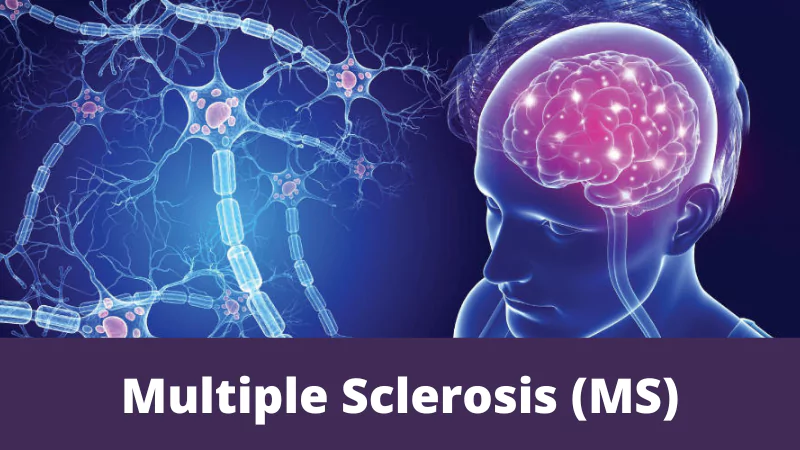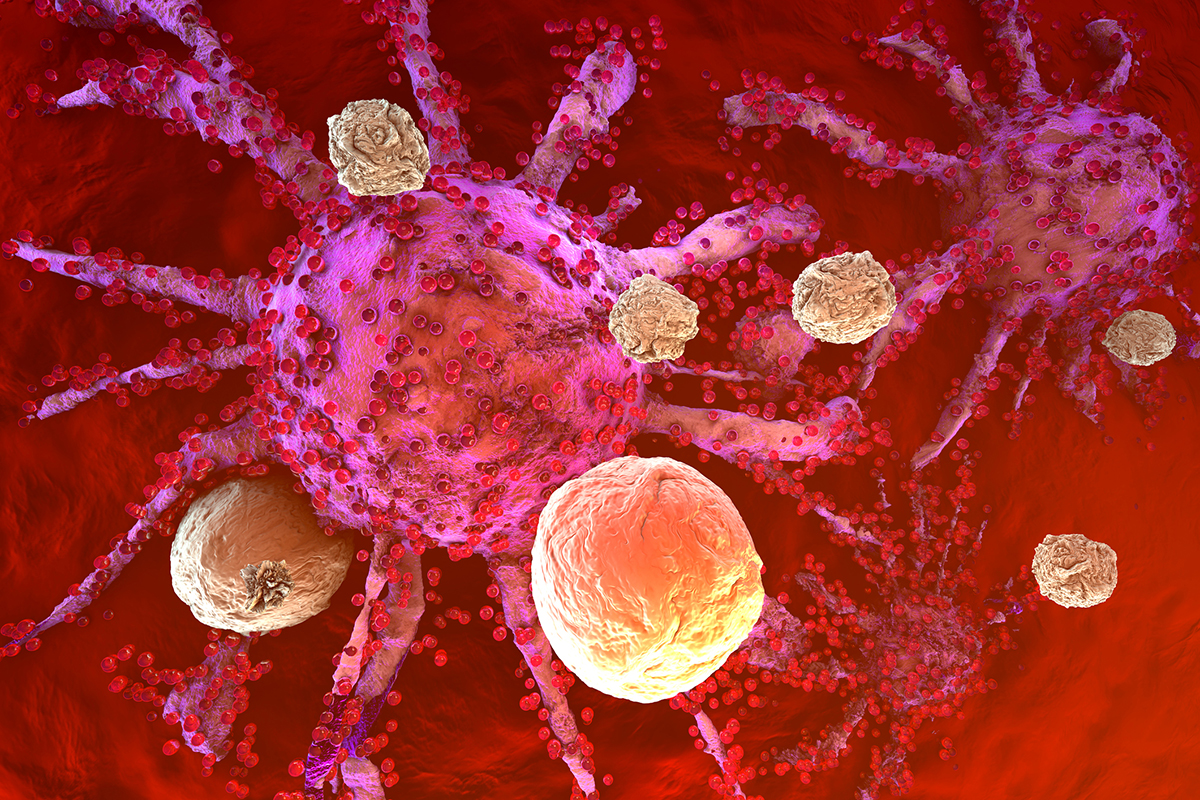
Introduction
Multiple sclerosis (MS) is a chronic autoimmune disorder that affects the central nervous system (CNS), leading to inflammation, demyelination, gliosis, and neuronal damage. This condition presents with a diverse range of neurological symptoms, including vision disturbances, numbness, tingling sensations, muscle weakness, bladder and bowel dysfunction, and cognitive decline.
The pathological process of MS involves perivascular lymphocytic infiltration and macrophage activity, which contribute to the destruction of the myelin sheath surrounding neurons. As a result, the symptoms experienced by patients vary depending on the location of these lesions. MS typically begins with acute relapses in young adults, often followed by a progressively worsening course that can lead to permanent disability within 10 to 15 years.
MS manifests in different forms and is categorized into seven distinct types:
- Relapsing-Remitting (RRMS) – The most common form, seen in 70–80% of cases, characterized by new or recurrent neurological symptoms lasting 24–48 hours, developing over days to weeks.
- Primary Progressive (PPMS) – Occurs in 15–20% of patients, showing gradual neurological decline from the onset without distinct relapses.
- Secondary Progressive (SPMS) – Initially follows a relapsing-remitting course but later transitions into a steady progression of symptoms, sometimes with occasional relapses.
- Progressive-Relapsing (PRMS) – A rare form seen in 5% of patients, involving gradual deterioration with occasional relapses.
Other classifications sometimes considered part of the MS spectrum include:
- Clinically Isolated Syndrome (CIS): A single episode of CNS inflammation that may progress to MS.
- Fulminant MS: A rapidly progressing form with multiple relapses leading to severe disability.
- Benign MS: A mild form with infrequent relapses and minimal long-term disability.
Among these types, relapsing-remitting multiple sclerosis (RRMS) is the most prevalent. Patients with RRMS experience periodic relapses with partial or complete recovery, though residual symptoms can accumulate over time, contributing to long-term disability. Diagnosis of RRMS requires evidence of at least two distinct CNS inflammatory events occurring at different times and affecting different regions within the CNS. This principle, known as dissemination in “time and space,” helps confirm the condition.
Early diagnosis of MS is crucial for initiating disease-modifying treatments, which can help reduce the frequency of relapses, limit MRI-detectable disease activity, and prevent permanent disability. Effective management also involves addressing associated concerns such as fatigue, depression, cognitive dysfunction, sleep disturbances, bladder and bowel issues, vertigo, and sexual dysfunction.
Also, Read – Autism Spectrum Disorder (ASD)
Etiology of Multiple Sclerosis
The exact cause of multiple sclerosis (MS) remains unknown; however, its pathogenesis is believed to involve a combination of immune dysfunction, environmental influences, and genetic predisposition.
Immune System Dysfunction

Autoimmune dysregulation is considered a primary factor in the development of MS, with the immune system mistakenly attacking the central nervous system (CNS). The predominant theory, known as the “outside-in” hypothesis, suggests that an unidentified antigen activates CD4+ proinflammatory T cells, particularly Th1 and Th17 cells. These cells attach to the endothelium of the CNS, cross the blood-brain barrier, and initiate an immune-mediated attack through cross-reactivity. Alternatively, the “inside-out” hypothesis proposes that an intrinsic abnormality within the CNS itself triggers inflammation, leading to subsequent immune-mediated tissue damage.
Environmental Factors
Certain environmental influences are thought to contribute to the risk of developing MS. A well- documented observation is the higher prevalence of the disease in populations residing at higher latitudes, suggesting a possible role of vitamin D deficiency in MS susceptibility. Additionally, infectious agents, such as the Epstein-Barr virus, have been implicated in disease development. The interaction between environmental exposures and genetic predisposition is an ongoing area of research.
Genetic Susceptibility
Genetics also play a crucial role in MS, as individuals with a family history of the disease are at an increased risk. First-degree relatives of MS patients have a 2% to 4% chance of developing the condition, compared to the 0.1% risk in the general population. The concordance rate for MS is significantly higher
among monozygotic twins (20%–30%) than dizygotic twins (5%). Similarly, the risk among parents and children is approximately 2%, which is 10 to 20 times greater than that of the general population.
Among the genetic factors linked to MS, the HLA-DRB1*1501 allele has shown a strong association with disease susceptibility. However, MS does not follow a single Mendelian inheritance pattern but is rather influenced by multiple genetic variations. Polymorphisms in several genes involved in immune regulation, vitamin D metabolism, fibrinolysis, mitochondrial function, and CNS repair have been associated with an increased risk of MS. These include:
- Immune-related genes: HLA-DR, IL2RA, IL4, IL6, IL12B, IL17R, IRF5, CD24, CD58, and EVI5
- Vitamin D metabolism genes: VDR and CYP27B1
- Mitochondrial DNA-related genes
- Fibrinolysis-associated gene: PAI-1
- CNS function and repair genes: ApoE and DPP6
To get treatment of Panchakarma Virechana Body Detox, Call to Ayursh Ayurveda
Ayurvedic Approach To Demyelinating Disorders: A Focus On Multiple Sclerosis
In multiple sclerosis (MS), the immune system attacks the protective myelin sheath—a lipid-rich (fatty) substance that surrounds nerve cell axons. This can be correlated with Snayu in Ayurveda, which is said to originate from Medas (Medasaha Snayu Sambhavaha). However, classical Ayurvedic texts do not describe multiple sclerosis as a distinct disease entity. Instead, disorders affecting the nervous system are broadly classified under Vata Vyadhi (neurological disorders).
Vata Dosha is primarily associated with movement (Gati) and sensory perception (Gandhana), functions that closely align with the nervous system as understood in contemporary science. Among the three Doshas, Vata is considered the most dominant and influential, as emphasized by Ayurvedic scholars:
“Pittam phangu kapham phangu phangavo mala dhatavah, Vayuna yatra niyante tatra gacchati meghavat.”
This verse highlights that Pitta, Kapha, bodily wastes (Mala), and tissues (Dhatus) depend on Vata for their proper functioning. Vata, in its balanced state, supports physiological processes by governing movement, controlling the mind, facilitating organ function, and carrying sensory information. However,
Ayurvedic Chikitsa For Multiple Sclerosis: A Holistic Approach
The treatment approach for multiple sclerosis (MS) in Ayurveda depends on whether the condition arises due to Dhatu Kshaya (tissue depletion) or Avarana (obstruction in the bodily channels).
Management of Vatavyadhi Due to Dhatu Kshaya
- Snehana (Oleation Therapy): Includes both external (Bahya) therapies like Abhyanga (therapeutic oil massage) and internal (Abhyantara) therapies like Snehapana (oral intake of medicated oils/ghee).
- Snehapoorvaka Swedana (Fomentation Therapy Following Oleation): Techniques such as Masha Pinda Sweda, Shashtika Shali Pinda Sweda, Nadi Sweda, Prastara Sweda, and Sankara Sweda are employed to nourish and strengthen the body.
- Mridu Shodhana (Gentle Purification): Snigdha Virechana (mild purgation therapy) is recommended to eliminate toxins while preserving body strength.
- Basti (Medicated Enema Therapy): Yapana Basti is suggested for rejuvenation and Vata pacification.
- Nasya (Nasal Therapy): Brimhana Nasya (nourishing nasal administration) is advised to support the nervous system and enhance cognitive function.
Management of Vatavyadhi Due to Avarana
In cases where Avarana (obstruction) is the underlying cause, treatment focuses on clearing the blocked Srotas (channels) using herbal formulations that possess Anabhishyandi (non-clogging), Snigdha (lubricating), Kaphapitta Aviruddha (balancing Kapha and Pitta), and Vatanulomana (Vata-regulating) properties.
- Panchakarma Detoxification: Therapies such as Sramsana Chikitsa (elimination therapy) and Yapana Basti (nourishing enema) are administered based on the patient’s strength and the stage of the disease.
- Rasayana Therapy: Rejuvenating formulations (Rasayana Dravyas) help in nerve regeneration and overall vitality.
- Mastishkya Chikitsa (Brain-Nourishing Therapies): Murdhni Taila (head oil therapies) such as Shirobasti, Shiropicchu, Shirodhara, Shiro Abhyanga, and Shiro Thalam are incorporated to enhance neurological function and pacify aggravated Vata.
Suggested – The Ayurvedic Perspective On ENT Health
Ayurvedic Formulations for Multiple Sclerosis Management
Kashaya (Decoctions)
- Bhadradarvyadi Kashaya
- Dhanwantaram Kashaya
- Astavarga Kashaya
- Maharasnadi Kashaya
Choorna (Powders)
- Ashwagandha Choorna
- Bala Choorna
- Guduchi Satva
- Amalaki + Yastimadhu Choorna
Asava/Arista (Fermented Preparations)
- Balarishta
- Ashwagandharishta
- Devadarvyarishta
- Nalikerasava
- Dashamoolarishta
Taila (Medicated Oils)
- Prabhanjana Vimardhana Taila
- Mahanarayana Taila
- Balashwagandha Taila
- Ksheerabala Taila
- Mahamasha Taila
- Dhanwantaram Taila
Ghrita (Medicated Ghee)
- Ashwagandhadi Ghrita
- Vidaryadi Ghrita
- Rasnadi Ghrita
- Chagalyadi Ghrita
Rasayana (Rejuvenating Therapies)
- Ashwagandha Rasayana
- Vidaryadi Lehya
- Amalaki Rasayana
Bhasma (Herbo-Mineral Preparations)
- Abraka Bhasma
- Rajata Bhasma
- Swarna Bhasma
Download our app for ayurvedic treatment and therapies.
Rasoushadhi (Herbo-Mineral Compounds)
- Panchamruta Lohaguggulu
- Bruhat Vata Chintamani Rasa
- Mahavatavidwamsaka Rasa
- Vatagajankusha Rasa
- Rasaraja Rasa
- Swarna Malini Vasantha Rasa
Conclusion

Multiple sclerosis is a potentially disabling neurological disorder affecting the central nervous system, including the brain, spinal cord, and optic nerves. It is characterized by demyelination, leading to progressive neurological impairment. While modern medical treatments such as steroids, glucocorticoids, and interferons provide symptomatic relief, they come with adverse effects such as fluid retention, potassium loss, weight gain, and hepatotoxicity. Furthermore, there is no definitive cure, and treatment remains only partially effective.
From an Ayurvedic perspective, multiple sclerosis can be understood as Dhatu Kshayajanya Vata Vyadhi due to its degenerative nature. As an autoimmune disorder, it may also be linked to Aama, leading to Avarana pathology, which ultimately results in dhatu kshaya and vitiation of Vata dosha.
Since it is not explicitly mentioned as a separate disease entity in classical Ayurvedic texts, it can be classified under Anukta Vata Vyadhi.
Ayursh Ayurveda offers a holistic approach to managing multiple sclerosis through Shodhana (detoxification), Shamana (palliative care), and Rasayana (rejuvenation therapy) based on the patient’s Nidana (etiology), Avastha (stage of disease), and Lakshanas (clinical manifestations). By adopting Vata Vyadhi Chikitsa, disease progression can be slowed, symptoms can be managed effectively, and the patient’s quality of life can be significantly improved.
Dr. Sri Ranjani Bhat will recommend suitable therapies tailored to address your specific health concerns, ensuring a holistic approach to wellness.


